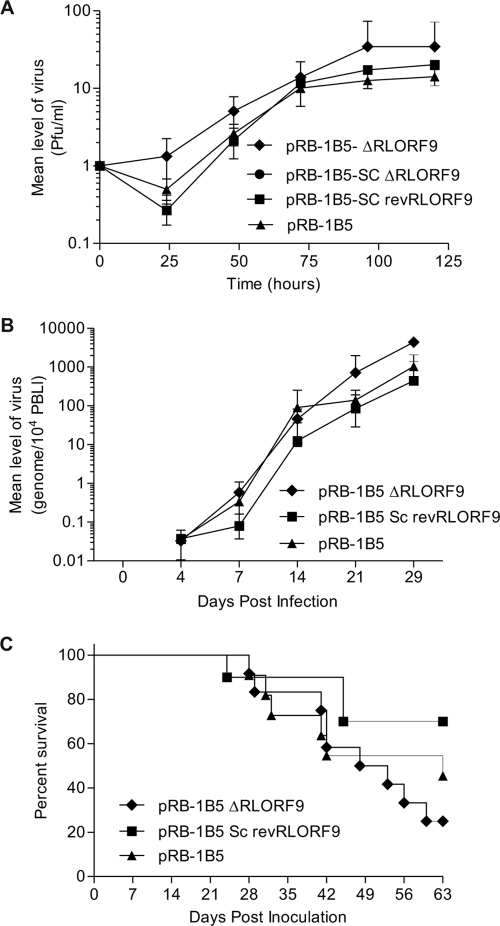FIG. 6.
Challenge experiment revealing that the ICR IRES-controlled RLORF9 is not essential for viral replication or tumor formation. (A) Growth curves for wild-type pRB-1B5, the double-copy deletion mutant pRB-1B5-ΔRLORF9, the single-copy deletion mutant pRB-1B5-SCΔRLORF9, and the single-copy revertant pRB-1B5-SCrevRLORF9. Fresh CEF were infected with the indicated viruses. After 0, 24, 48, 72, 96, and 120 h, the infected cultures were trypsinized and plated on fresh CEF in triplicate. MDV-1 plaques were counted after visualization by immunohistochemistry. Each point represents the average for two plates. (B) Time course analysis of MDV-1 genome copy number in the blood of chickens infected with wild-type pRB-1B5, the double-copy deletion mutant pRB-1B5-ΔRLORF9, and the single-copy revertant pRB-1B5-SCrevRLORF9. The viral genome copy number was determined by qPCR, using DNAs extracted from PBLs and primers specific to the MDV-1 genome. (C) Survival curves for chickens inoculated with the indicated recombinant viruses. A log rank (Mantel-Cox) test revealed no statistical difference between pRB-1B5 and pRB-1B5-ΔRLORF9 (P = 0.4627) or between pRB-1B5 and pRB-1B5-SCrevRLORF9 (P = 0.2419).

